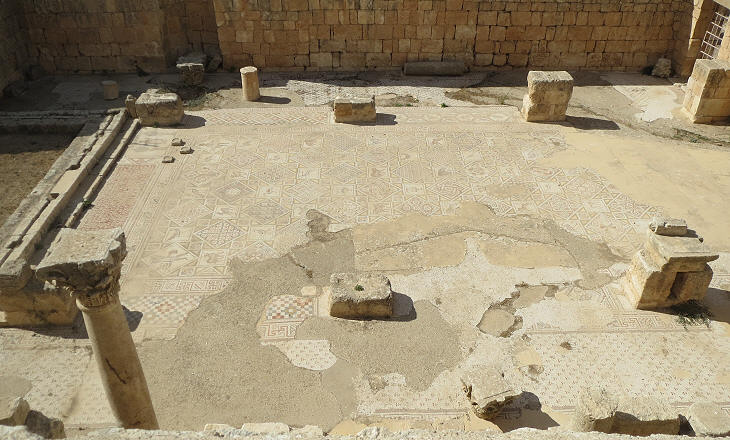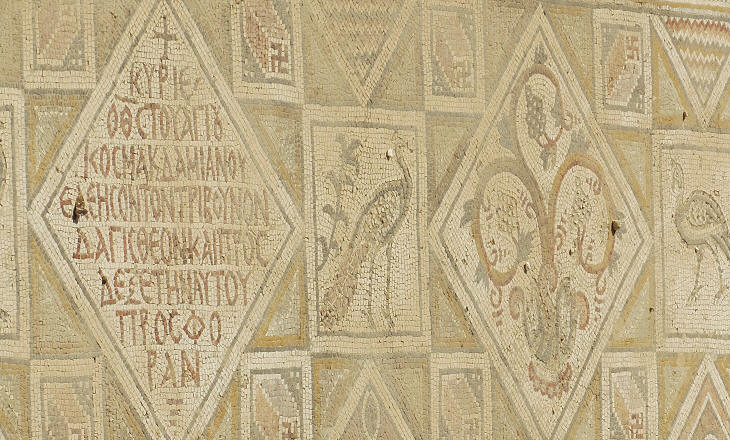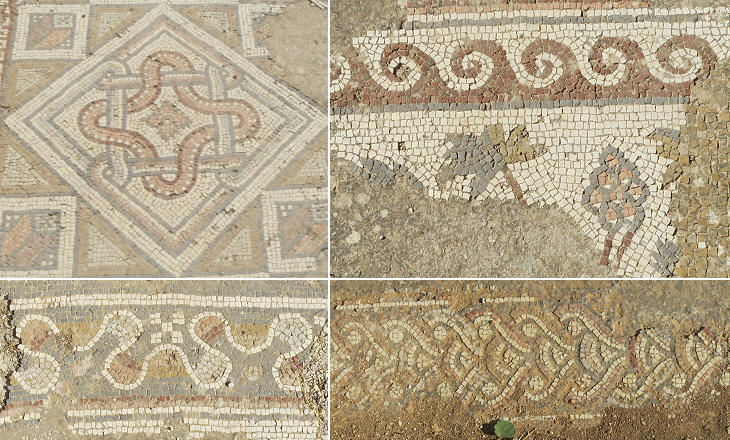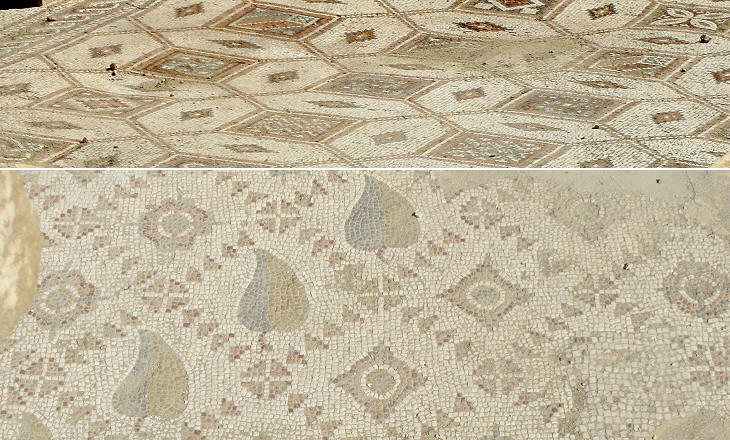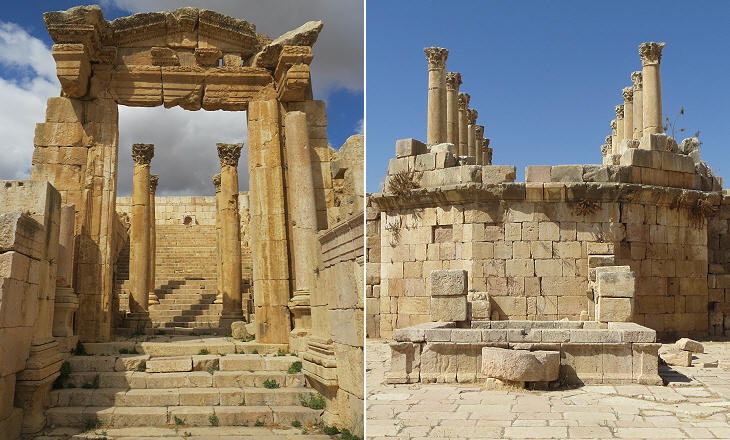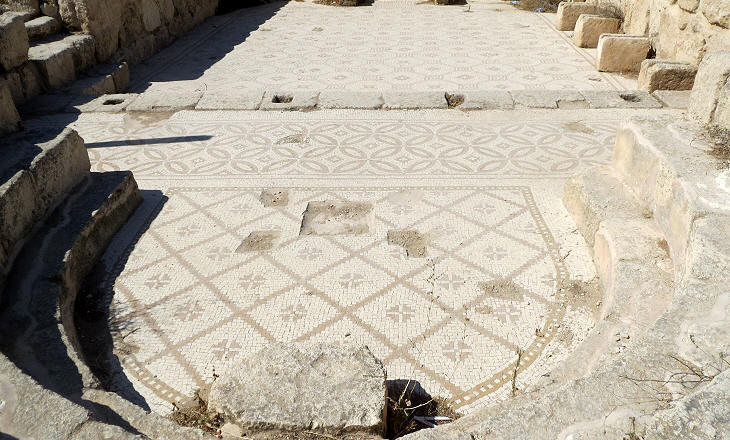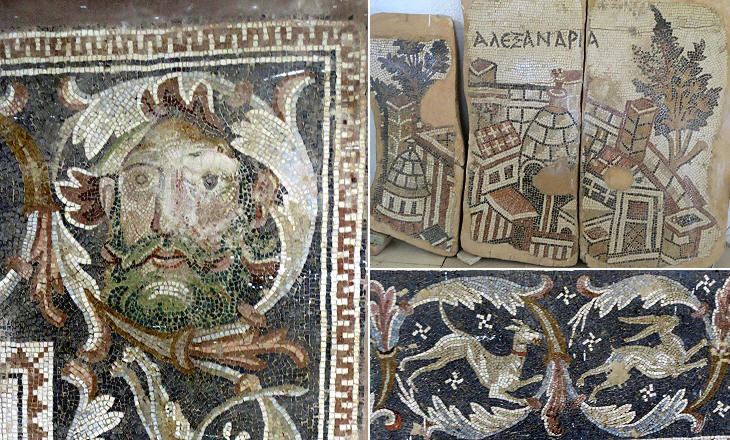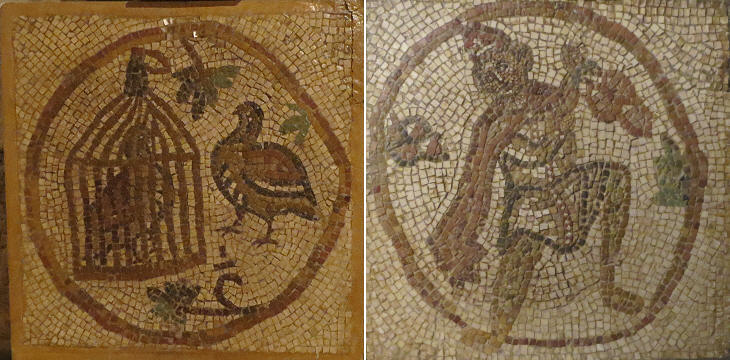  What's New! Detailed Sitemap All images © by Roberto Piperno, owner of the domain. Write to romapip@quipo.it. Text edited by Rosamie Moore. Page added in November 2013. |
 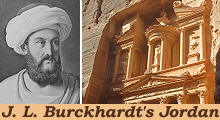 - Christian Jerash - Christian Jerash
(left: J. L. Burckhardt in Arab attire in a XIXth century engraving; right: the Treasury of Petra) If you came to this page directly you might wish to read Burckhardt's account of his visit to Jerash first.
Burckhardt was not able to identify several churches of ancient Gerasa built with materials taken from the large portico which surrounded the Temple to Artemis because their floor mosaics with Christian symbols were covered with rubble. Sts. Cosmas and Damian's is the largest of three adjoining churches built in 529-533 near that temple.
The floor of the church was decorated with a complex mosaic which contained inscriptions with the name of the donors, Christian symbols (e.g. peacocks), traditional geometric patterns including swastikas and elaborate decorations depicting grapes, a reference to the farming activities of the region.
The adjoining churches of St. John's and St. George's retain only fragments of their floor mosaics (some of which have been moved to a small museum inside the archaeological area). They are very similar to that at Sts. Cosmas and Damian's. Without a proper protection they are bound to disappear.
In 559 a church was built between the Temple to Artemis and the Northern Theatre. Its floor mosaic is less elaborate than those of the three adjoining churches. This perhaps because of the economic crisis which hit the region as a consequence of a pestilence known as the Plague of Justinian which swept through the whole Mediterranean region in 541-42.
Two other churches have been identified along the southern side of the terrace of the Temple to Artemis. They were probably the result of changes made to existing temples. In particular the entrance to the Cathedral (built in ca 365) from Cardo Maximus is similar to that to the Temple to Artemis which is located at a few yards of distance. St. Theodore's was built at the end of the Vth century at the back of an atrium of the Cathedral. The construction techniques employed for the churches of Jerash were not as sound as those used for the pagan monuments of the town, because in most cases their walls have almost entirely disappeared.
While most churches are grouped around the Temple to Artemis, that built by Bishop Mariano in 570 is situated near the Arch of Hadrian, outside the town walls. Its small size and its plain floor mosaic are another indication of the decline of the town in the second half of the VIth century.
The final years of Gerasa were marred by a series of wars which disrupted the region. The Persians invaded it in 614, the Byzantines retook it in 629 and surrendered it to the Muslims in 636. In 747 or 749, a major earthquake caused the final abandonment of the town.
Return to Burckhardt's account of his visit to Jerash. Move to: Introductory Page Ajlun Castle and Pella (May 3rd, 1812) Amman and its environs (July 7th, 1812) Aqaba "Castles" in the Desert (incl. Qasr el-Azraq) Madaba (July 13th, 1812) Mt. Nebo and the Dead Sea (July 14th, 1812) On the Road to Petra (incl. Kerak and Showbak) Petra (August 22nd, 1812) Umm al-Jimal Umm Qays (May 5th, 1812)  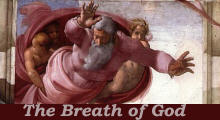 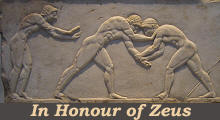 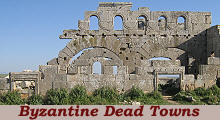
|
